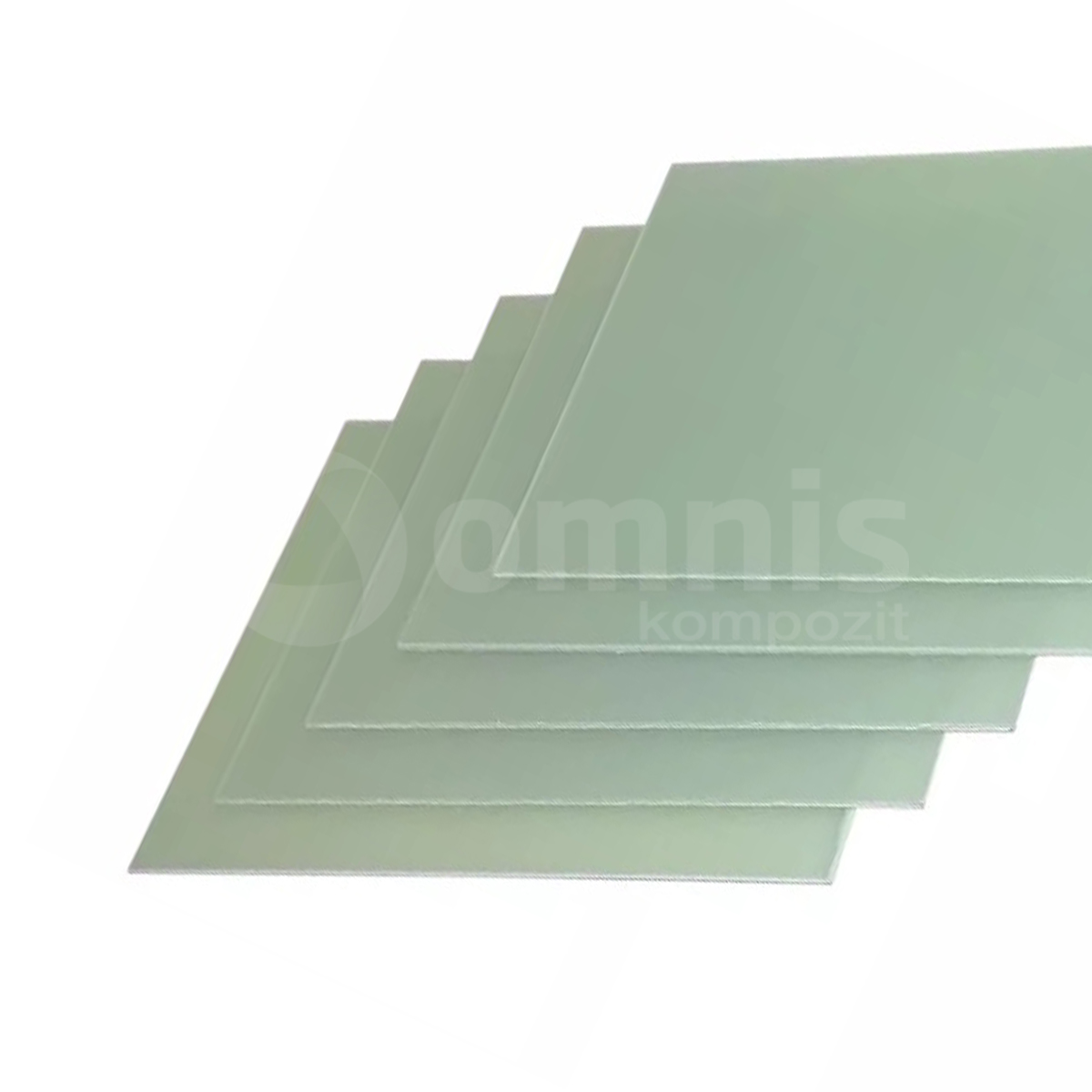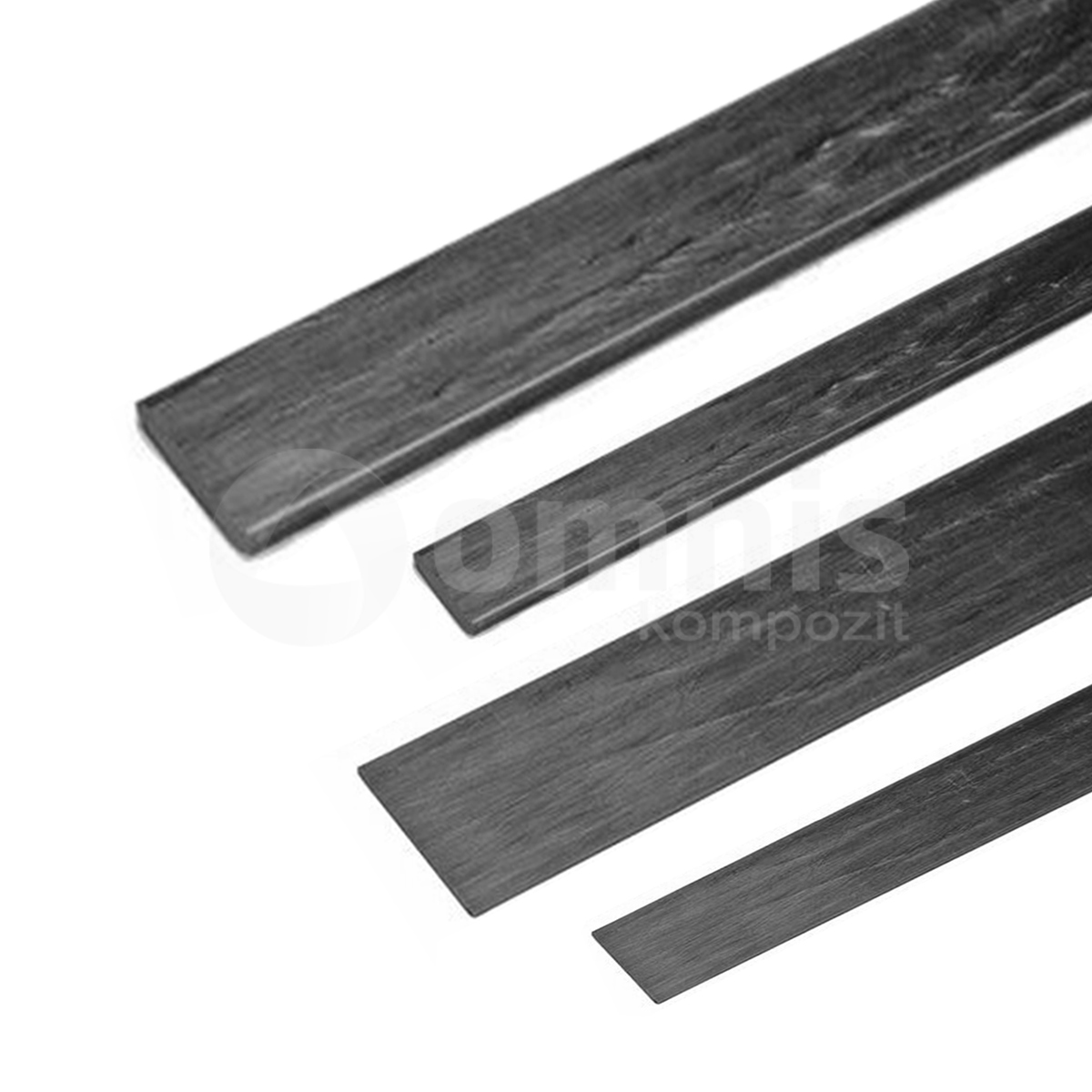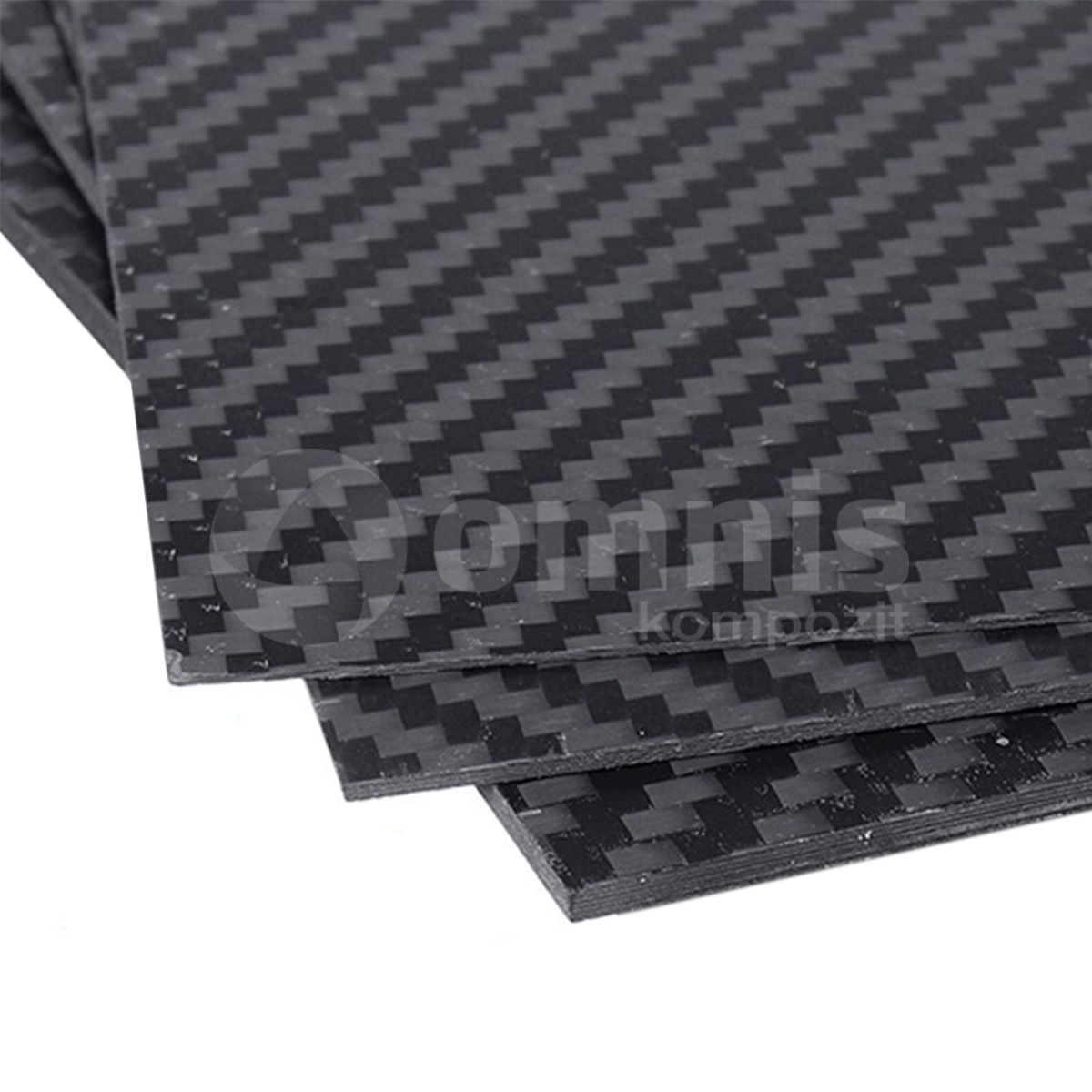Carbon Fiber Plates
A carbon fiber plate is a high-performance material renowned for its strength, stiffness, and lightweight properties, crafted from carbon fiber reinforced polymer (CFRP). These plates are made by aligning carbon fiber yarns in a specific pattern, which are then set in place with a durable resin, creating a composite material that exhibits exceptional mechanical properties. They stand out for their distinctive appearance, often showcasing a sleek, high-gloss finish that reveals the woven pattern of the carbon fibers beneath. This combination of aesthetic appeal and high performance makes carbon fiber plates a preferred choice for applications demanding the utmost in strength-to-weight ratio, from aerospace and automotive industries to sports equipment and high-end consumer goods. By choosing carbon fiber plates, users benefit from a cutting-edge material that offers significant advantages over traditional materials, including metals and plastics, in terms of weight savings, durability, and design flexibility.
How are carbon fiber plates manufactured?
They are manufactured through a precise and controlled process that begins with the layering of carbon fiber woven fabrics impregnated with a resin system, typically epoxy. These layers are carefully placed in a mold or on a flat surface to achieve the desired thickness and configuration. The assembly is then subjected to heat and pressure, in a vacuum bag, to cure the resin, bonding the carbon fiber fabrics together into a solid plate. This process, known as curing, transforms the resin into a rigid matrix that locks the carbon fibers in place, resulting in a composite material that combines the high tensile strength of carbon fiber with the solidity and dimensional stability of the cured resin. Advanced manufacturing techniques, such as CNC machining, can be employed after post-curing to cut the carbon fiber plates to precise dimensions or shapes, ensuring they meet the exact specifications required for various applications. The meticulous manufacturing process of carbon fiber plates ensures that they offer advanced strength, stiffness, and lightweight characteristics, making them ideal for a wide range of high-performance applications.
What are the main advantages of using carbon fiber plates?
The main advantages of using carbon fiber plates lie in their exceptional strength-to-weight ratio, rigidity, and durability. These plates are significantly lighter than metal plates of equivalent strength, making them an ideal choice for applications where weight savings are crucial, such as in aerospace, automotive, and sporting goods. They also exhibit superior stiffness, ensuring minimal flex under load, which is critical for high-precision applications. Additionally, they show excellent fatigue resistance, meaning they can withstand repeated stress cycles without degrading in performance. Another key advantage is their resistance to corrosion, making them suitable for use in harsh environments where traditional materials might fail. These attributes make carbon fiber plates a versatile and reliable material choice for engineers and designers seeking to push the boundaries of innovation, offering the potential to improve efficiency, performance, and aesthetics in a wide array of products and structures.
In what applications are carbon fiber plates commonly used?
They are commonly used in a wide range of applications where their unique properties, such as high strength, low weight, and corrosion resistance, can be leveraged to achieve superior performance. In the aerospace industry, they are utilized for structural components and control surfaces, significantly reducing the overall weight of aircraft and spacecraft. Automotive applications include chassis components, body panels, and reinforcement parts in high-performance vehicles, where weight reduction directly translates to improved speed and fuel efficiency. In sport equipments, carbon fiber plates are used to manufacture lightweight and durable equipment such as bicycle frames, racing shells, and high-end athletic footwear. Additionally, these plates are employed in the construction of drones, robotics, and precision machinery, where their stiffness and strength enhance the performance and reliability of these systems. The versatility and superior mechanical properties of carbon fiber plates make them a sought-after material solution across industries, pushing the limits of what is possible in design and engineering.
Can they be customized in size and thickness?
Yes, they can be customized in both size and thickness to meet specific requirements of various projects and applications. This customization is facilitated by the versatility of the carbon fiber layup, allowing manufacturers to tailor the dimensions and properties of the plates according to customer needs. Whether it’s a thin, lightweight plate for aerospace applications or a thicker, more robust plate for structural uses, the flexibility in manufacturing ensures that the final product can achieve the desired balance of strength, stiffness, and weight. Additionally, custom cuts and shapes can be achieved through precision machining processes, enabling the creation of complex geometries and parts that fit specific design constraints. This level of customization makes carbon fiber plates an attractive option for a wide range of industries, from automotive and aerospace to consumer electronics and sporting goods, providing engineers and designers with a high-performance material that can be adapted to virtually any application.
How do carbon fiber plates compare to metal plates in terms of strength and weight?
They offer a curucial advantage over traditional metal plates, primarily in terms of strength and weight. These high-tech materials are renowned for their exceptional strength-to-weight ratio, a key attribute that allows them to outperform metals like steel and aluminum in many applications. A carbon fiber plate, despite being significantly lighter, can deliver equal or greater strength than its metal counterpart. This remarkable characteristic is due to the alignment and composition of carbon fibers within the resin matrix, which provides tensile strength and rigidity while remaining lightweight.
In practical terms, this means that carbon fiber plates can significantly reduce the overall weight of structures and products without compromising on strength or durability. This is particularly beneficial in industries such as aerospace, automotive, and sporting goods, where reducing weight can lead to improved performance, fuel efficiency, and handling. For instance, in the automotive industry, replacing metal components with carbon fiber can significantly decrease vehicle weight, thus enhancing acceleration, braking, and fuel economy.
Moreover, carbon fiber plates exhibit excellent fatigue resistance and will not weaken over time as some metals do under cyclic loading. They are also impervious to corrosion, which is a common issue with metal plates, especially in harsh environmental conditions. These properties make carbon fiber plates not only a lightweight alternative to metal plates but also a more durable and long-lasting solution in many engineering and design applications.
Can they be drilled or machined?
Yes, they can indeed be drilled or machined, but it requires special considerations to maintain the integrity of the material and achieve the desired precision. Due to the composite nature of carbon fiber plates—comprising carbon fibers embedded in a resin matrix—machining them is different from machining metals. Specialized tools, such as diamond-coated bits or carbide tools, are recommended to effectively cut through the carbon fibers and prevent fraying or splitting.
When drilling or machining carbon fiber plates, it’s important to use proper speeds, feeds, and cooling methods to prevent overheating, which can damage the resin matrix and compromise the structural integrity of the plate. Additionally, supporting the plate adequately to prevent vibrations and using sharp tools can help achieve clean cuts and prevent delamination.
Despite these special requirements, the ability to drill and machine carbon fiber plates allows for a high degree of customization and precision in manufacturing parts and components. This adaptability makes carbon fiber plates highly valuable in custom designs and applications requiring lightweight and strong materials with specific dimensions or shapes. With the right equipment and techniques, carbon fiber plates can be effectively and accurately machined to meet a wide range of engineering and design needs.
How do they perform under high temperatures?
They are known for their excellent performance under a wide range of temperatures, including high-temperature environments. The thermal stability of carbon fiber plates is largely attributed to the carbon fibers themselves, which maintain their integrity and mechanical properties at temperatures that would compromise many metals and other composite materials. However, the specific high-temperature performance of a carbon fiber plate also depends on the type of resin used in the composite matrix. While standard epoxy resins can withstand moderate temperatures, specialized high-temperature resins are available for applications requiring prolonged exposure to higher temperatures. These advanced resins ensure that carbon fiber plates retain their strength, stiffness, and dimensional stability even when subjected to the thermal stresses encountered in aerospace, automotive, and industrial applications. It’s important to select the appropriate resin system for the intended application to ensure optimal performance under expected temperature conditions.
Are carbon fiber plates resistant to corrosion and chemicals?
Carbon fiber plates exhibit excellent resistance to corrosion and many chemicals, making them an ideal choice for use in harsh environments where other materials might degrade or fail. Unlike metals that can oxidize or corrode when exposed to moisture, salts, or acidic conditions, carbon fiber plates remain unaffected, maintaining their structural integrity over time. Additionally, the chemical resistance of carbon fiber plates depends on the resin matrix that binds the carbon fibers together. Most commonly used resins in carbon fiber composites offer good resistance to a wide range of chemicals, including oils, solvents, and mild acids, ensuring that carbon fiber plates can be used in chemical processing, marine, and outdoor applications without significant deterioration. However, for extremely aggressive chemical environments, it is crucial to verify the compatibility of the specific resin system with the chemicals in question to ensure long-term durability.
Can they be used in structural applications?
Yes, they can be used in structural applications due to their high strength, stiffness, and lightweight properties. Their superior mechanical performance compared to traditional structural materials like steel and aluminum makes them an excellent choice for applications where weight reduction without sacrificing strength is critical. They are used in the construction of high-performance vehicles, aerospace components, and sporting equipment, where their ability to provide structural integrity while minimizing weight is highly valued. Additionally, their use is expanding into civil engineering and architectural projects, such as bridge reinforcement, building facades, and lightweight structural panels, where their durability, corrosion resistance, and aesthetic appeal offer distinct advantages. When designed and implemented correctly, carbon fiber plates can significantly enhance the performance and efficiency of structural applications across a broad spectrum of industries.
What types of finishes are available for carbon fiber plates?
They are available in a variety of finishes to meet both aesthetic and functional requirements. The most common finish is a high-gloss clear coat that accentuates the carbon fiber weave, providing a sleek, modern look that is highly sought after in automotive, aerospace, and consumer electronics applications. For those seeking a more subtle appearance, a matte finish can reduce glare and provide a more understated aesthetic. Beyond aesthetics, carbon fiber plates can also be finished with functional coatings designed to enhance their performance or durability. These may include UV-resistant coatings to prevent degradation from sunlight exposure, anti-static coatings for electronic applications, or even textured finishes to improve grip or adhesion in bonded assemblies. The choice of finish depends on the specific requirements of the application and the desired visual appeal, allowing for significant customization to achieve the optimal combination of form and function.
How do you clean and maintain carbon fiber plates?
Cleaning and maintaining carbon fiber plates is relatively straightforward, ensuring their longevity and preserving their appearance. For general cleaning, a soft cloth or sponge with mild soap and water is usually sufficient to remove dust, fingerprints, and light surface contaminants. It’s important to avoid using abrasive materials or harsh chemicals that could damage the resin surface. For tougher stains or residues, specialized carbon fiber cleaning products are available that safely remove contaminants without harming the material. To maintain the gloss and protect the finish, periodic application of a carbon fiber-specific protective wax or sealant can help repel dust and moisture, while also providing a barrier against UV rays if the plates are exposed to sunlight. Regular inspection for any signs of wear or damage, particularly in structural applications, ensures that any potential issues can be addressed promptly to maintain the integrity and performance of the carbon fiber plates.





